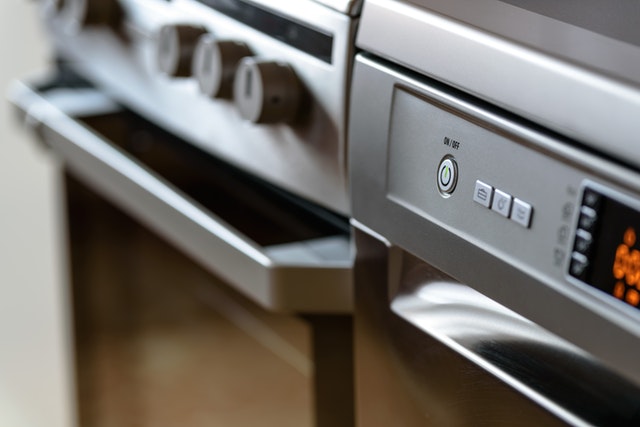
Magnesium alloys are mixtures of magnesium (the lightest structural metal) with other metals (called an alloy), often aluminium, zinc, manganese, silicon, copper, rare earths and zirconium. Magnesium alloys have a hexagonal lattice structure, which affects the fundamental properties of these alloys. Plastic deformation of the hexagonal lattice is more complicated than in cubic latticed metals like aluminium, copper and steel; therefore, magnesium alloys are typically used as cast alloys, but research of wrought alloys has been more extensive since 2003. Cast magnesium alloys are used for many components of modern automobiles and have been used in some high-performance vehicles; die-cast magnesium is also used for camera bodies and components in lenses.
Magnesium alloys, especially precipitation-hardened alloys, are used in casting. Sand, permanent mold and die casting methods are used, but plaster-of-Paris casting has not yet been perfected. Sand casting in green-sand molds requires a special technique, because the magnesium reacts with moisture in the sand, forming magnesium oxide and liberating hydrogen. The oxide forms blackened areas called burns on the surface of the casting, and the liberated hydrogen may cause porosity. Inhibitors such as sulfur, boric acid, ethylene glycol, or ammonium fluoride are mixed with the damp sand to prevent the reaction. All gravity-fed molds require an extra high column of molten metal to make the pressure great enough to force gas bubbles out of the casting and make the metal take the detail of the mold. The thickness of the casting wall should be at least 5/32 in. under most conditions
Extra-large fillets must be provided at all re-entrant corners, since stress concentration in magnesium castings are particularly dangerous. Permanent mold castings are made from the same alloys and have about the same physical properties as sand castings. Since the solidification shrinkage of magnesium is about the same as that of aluminium, aluminium molds can often be adapted to make magnesium-alloy castings (although it may be necessary to change the gating). Pressure cold-chamber castings are used for quantity production of small parts. The rapid solidification caused by contact of the fluid metal with the cold die produces a casting of dense structure with excellent physical properties. The finish and dimensional accuracy are very good, and machining is necessary only where extreme accuracy is required. Usually these castings are not heat treated.
Many standard magnesium alloys are easily welded by gas or resistance-welding equipment, but cannot be cut with an oxygen torch. Magnesium alloys are not welded to other metals, because brittle inter-metallic compounds may form, or because the combination of metals may promote corrosion. Where two or more parts are welded together, their compositions must be the same. Soldering of magnesium alloys is feasible only for plugging surface defects in parts. The solders are even more corrosive than with aluminium, and the parts should never be required to withstand stress. Riveted joints in magnesium alloy structures usually employ aluminium or aluminium-magnesium alloy rivets. Magnesium rivets are not often used because they must be driven when hot. The rivet holes should be drilled, especially in heavy sheet and extruded sections, since punching tends to give a rough edge to the hole and to cause stress concentrations.
A particular attraction of magnesium alloys lies in their extraordinarily good machining properties, in which respect they are superior even to screwing brass. The power required in cutting them is small, and extremely high speeds (5000 ft per min in some cases) may be used. The best cutting tools have special shapes, but the tools for machining other metals can be used, although somewhat lower efficiency results. When magnesium is cut at high speed, the tools should be sharp and should be cutting at all times. Dull, dragging tools operating at high speed may generate enough heat to ignite fine chips. Since chips and dust from grinding can therefore be a fire hazard, grinding should be done with a coolant, or with a device to concentrate the dust under water. The magnesium grinder should not be used also for ferrous metals, since a spark might ignite the accumulated dust. If a magnesium fire should start, it can be smothered with cast-iron turnings or dry sand, or with other materials prepared especially for the purpose. Water or liquid extinguishers should never be used, because they tend to scatter the fire. Actually, it is much more difficult to ignite magnesium chips and dust than is usually supposed, and for that reason they do not present great machining difficulties. The special techniques that must be used in fabricating magnesium (working, casting, and joining) add considerably to the manufacturing cost. In selecting between aluminium and magnesium or a given part, the base cost of the metal may not give much advantage to either, but usually the manufacturing operations make magnesium more affordable.[1] There is, perhaps, no group of alloys where extrusion is more important than it is to these, since the comparatively coarse-grained structure of the cast material makes most of them too susceptible to cracking to work by other means until sufficient deformation has been imparted to refine the grain. Therefore, except for one or two soft alloys, machining is invariably a preliminary step before other shaping processes.
For further information about our services, contact us via the convenient website form or submit a request for quote directly.
We welcome your inquiries.